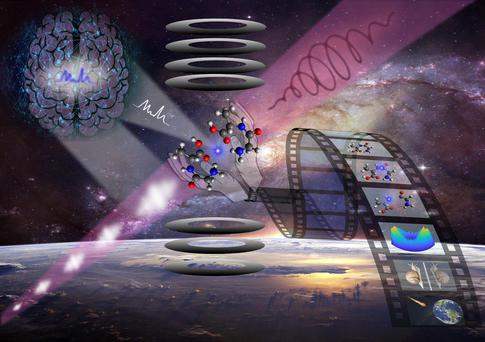XFEL: Helical X-Ray-Laser Pulses to Unveil Life’s Fastest Movements
https://www.xfel.eu/e35178/e35455/e35456
https://www.xfel.eu/news_and_events/news/index_eng.html
news
news
news
eng
1
1
10
both
0
1
%Y/%m/%d
Press-Release
eng,ger
 For some years now, researchers around the world have been working intensively on generating helical X-ray pulses using free-electron lasers (FELs). This would make it possible to capture some of the fastest movements in nature. In the journal Physical Review Research, leading experts from research institutions such as the European XFEL, the University of Hamburg, DESY and the SLAC accelerator centre in the United States now outline the prospects for this new technology. They hope to use the helical X-ray pulses to gain new, profound insights into physics, chemistry and structural biology.
For some years now, researchers around the world have been working intensively on generating helical X-ray pulses using free-electron lasers (FELs). This would make it possible to capture some of the fastest movements in nature. In the journal Physical Review Research, leading experts from research institutions such as the European XFEL, the University of Hamburg, DESY and the SLAC accelerator centre in the United States now outline the prospects for this new technology. They hope to use the helical X-ray pulses to gain new, profound insights into physics, chemistry and structural biology.
2025/01/31
Back
Helical X-Ray-Laser Pulses to Unveil Life’s Fastest Movements
Article in Physical Review Research

Download [3.0 MB, 1654 x 1169]
Artistic illustration of chirality science with a free-electron laser. AI-based analysis reveals the time-energy and polarization structure of every ultrashort pulse. The acquired in-depth knowledge allows for site-specific observations in chiral systems and molecules (here: Glycyl-l-alanine). Photo: Physical Review Research, M. Ilchen
Artistic illustration of chirality science with a free-electron laser. AI-based analysis reveals the time-energy and polarization structure of every ultrashort pulse. The acquired in-depth knowledge allows for site-specific observations in chiral systems and molecules (here: Glycyl-l-alanine). Photo: Physical Review Research, M. Ilchen
"This publication comes at exactly the right time," says Michael Meyer, Leading Scientist at European XFEL and Group Leader of the Small Quantum Systems (SQS) scientific instrument: "Because it coincides with the commissioning and start of operation of our new APPLE-X undulator at the SASE3 beamline of European XFEL." APPLE-X enables experiments with linearly or circularly polarised, soft X-ray radiation at photon energies of 0.26 to 3 kiloelectronvolts (keV) or 0.4 to 4.7 nanometres.
See:
Physical Review Research 7, 1 (2025)
DOI: 10.1103/PhysRevResearch.7.011001
